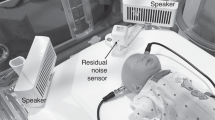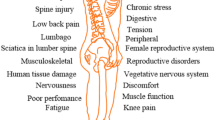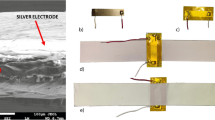Abstract
OBJECTIVE:
To test the hypothesis that a gel mattress is most effective in attenuating mechanical vibration in neonatal transport, we performed a randomized block study of four mattress combinations (none, foam, gel, gel on foam) using mannequins and an ambulance traveling on fixed routes (city, highway).
STUDY DESIGN:
Mechanical vibration was assessed by measuring vertical accelerations at two locations: the forehead of a 2000-gm mannequin and the transport incubator base. From time histories of these accelerations, root mean square (RMS) values and power spectral density functions were calculated. The effect of the mattress on the transmission of vibration was determined from ratios of the RMS values at the two locations. An RMS ratio of <1.0 indicates attenuation, whereas a ratio of >1.0 indicates accentuation of vibration. From the power spectral density functions, the natural frequency of the system was determined for each mattress combination in relation to the natural frequencies of the ambulance. To determine the effect of the weight of the mannequin on vibration, additional measurements were performed using a 300-gm mannequin.
RESULTS:
All the observed RMS ratios were >1. The highest ratios were observed on the city route in the absence of the gel mattress. The gel mattress,
used alone or with the foam mattress, in contrast to foam or no mattress, shifted the natural frequency of the system away from the natural frequencies of the ambulance, avoiding a large amplification of vibration. A decrease in the weight of the mannequin caused the gel mattress to be less effective in attenuating vibration.
CONCLUSION: A gel mattress, used alone or with a foam mattress, results in the least accentuation of vibration, but vibration in ambulance transport is not attenuated by any of the mattress combinations. The hazard of vibration may be particularly relevant when transporting extremely low birth weight neonates. These findings indicate a need for study and design of more effective devices that can reduce the vibratory stress.
This is a preview of subscription content, access via your institution
Access options
Subscribe to this journal
Receive 12 print issues and online access
$259.00 per year
only $21.58 per issue
Buy this article
- Purchase on Springer Link
- Instant access to full article PDF
Prices may be subject to local taxes which are calculated during checkout
Similar content being viewed by others
Author information
Authors and Affiliations
Corresponding author
Additional information
This work was presented in part at the National Perinatal Association Annual Clinical Conference and Exposition (Young Investigator Award Presentation), Providence, RI, November 12–15, 1998, and at the Pediatric Academic Societies’ Annual Meeting, San Francisco, CA, May 1–4, 1999. G. G. and J. A. B. are medical students at Vanderbilt University School of Medicine.
This work was funded in part by the Vanderbilt Newborn Regionalization Program: Tennessee Department of Health.
Rights and permissions
About this article
Cite this article
Gajendragadkar, G., Boyd, J., Potter, D. et al. Mechanical Vibration in Neonatal Transport: A Randomized Study of Different Mattresses. J Perinatol 20, 307–310 (2000). https://doi.org/10.1038/sj.jp.7200349
Published:
Issue Date:
DOI: https://doi.org/10.1038/sj.jp.7200349
This article is cited by
-
Do transport factors increase the risk of severe brain injury in outborn infants <33 weeks gestational age?
Journal of Perinatology (2020)
-
Decreasing sound and vibration during ground transport of infants with very low birth weight
Journal of Perinatology (2015)
-
Vergleich der Krafteinwirkung auf Säuglingsdummies in Transportinkubatoren bei Vollbremsung in verschiedenen Rettungswagen
Notfall + Rettungsmedizin (2012)



